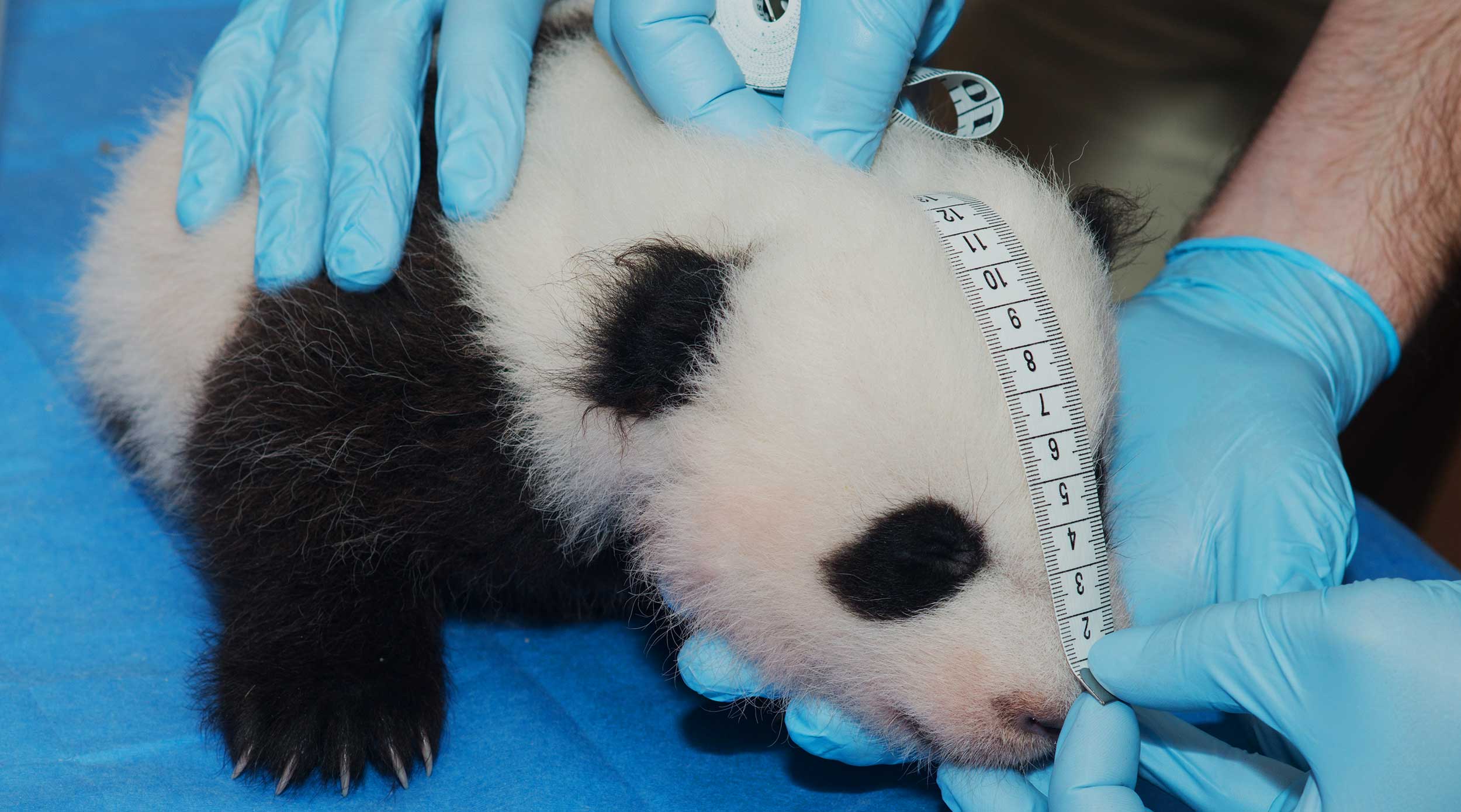
How to steal a panda
 The National Zoo
The National Zoo
It’s hard to tell how many Chinese American explorers roamed the earth in 1936, but at least one did. His name was Quentin Young, and he was going to help Ruth Harkness smuggle a panda from China.

29¢ Giant Panda USA stamp, 1992 (National Postal Museum)
These days, we don’t really investigate our fascination with the giant panda, we just assume that we’ve always been in love with them. Maybe it’s their strangeness; the signature white fur with black patches selectively adorned across their coats, with the signature burglar-like mask. Their long tails, and diet consisting almost entirely of bamboo, are so distinct from other bears that some scientists long insisted that they were actually humongous rodents. Or perhaps it’s their stubborn rarity; that we can’t talk about pandas without mentioning that less than 2,000 live today. We gawk at them chewing on sticks and rolling on grass and swinging from tires within controlled habitats, while we frustratingly beg them to keep away from the white light of extinction, and just fornicate every once in awhile, for goodness sake.
But if we’re really honest about it, the main reason we’re so obsessed with pandas, so insistent on protecting them from the hall of extinction, is because they’re extremely cute.
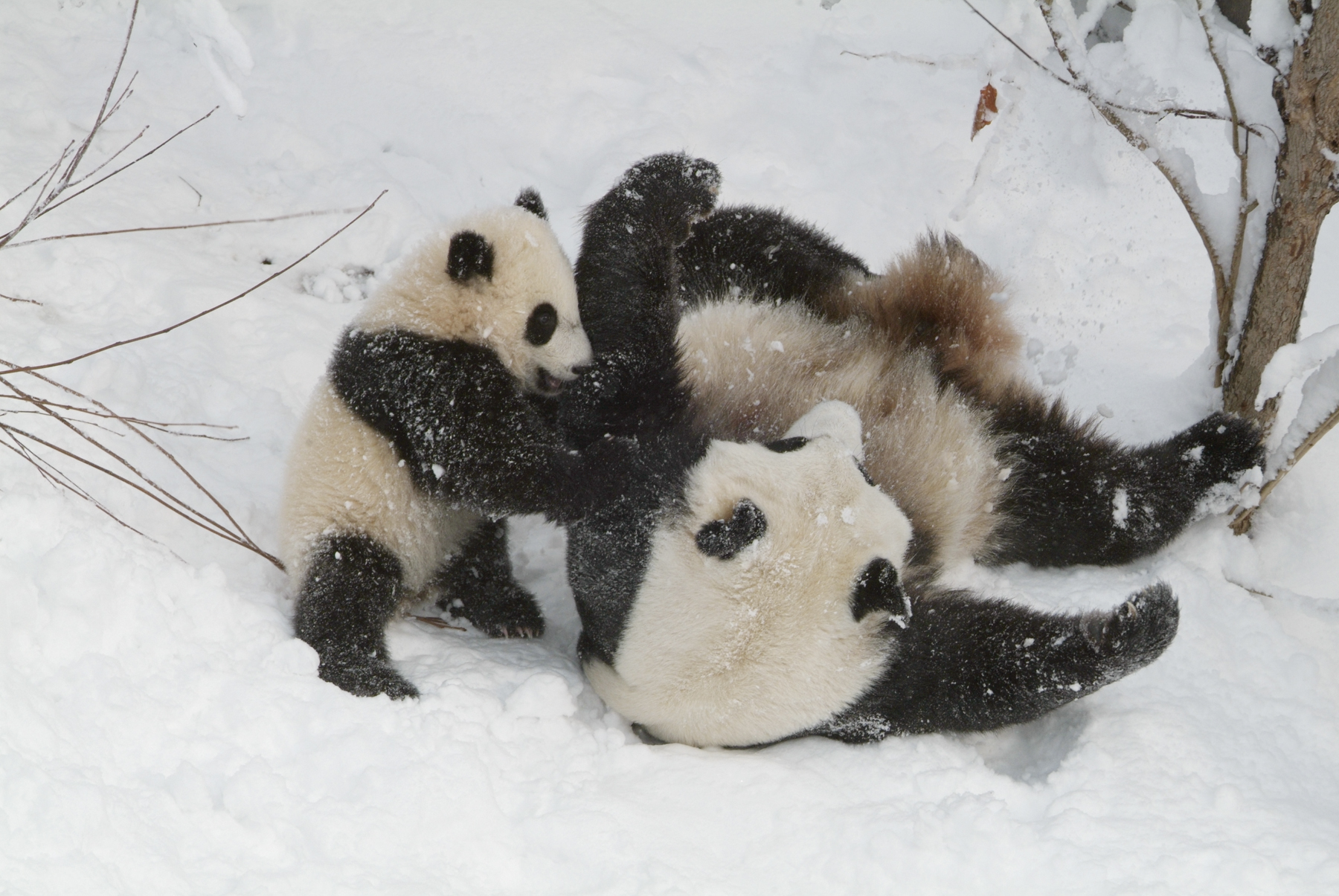
Tai Shan (left) plays in the snow with his mother, Mei Xiang, 2006. (National Zoo)
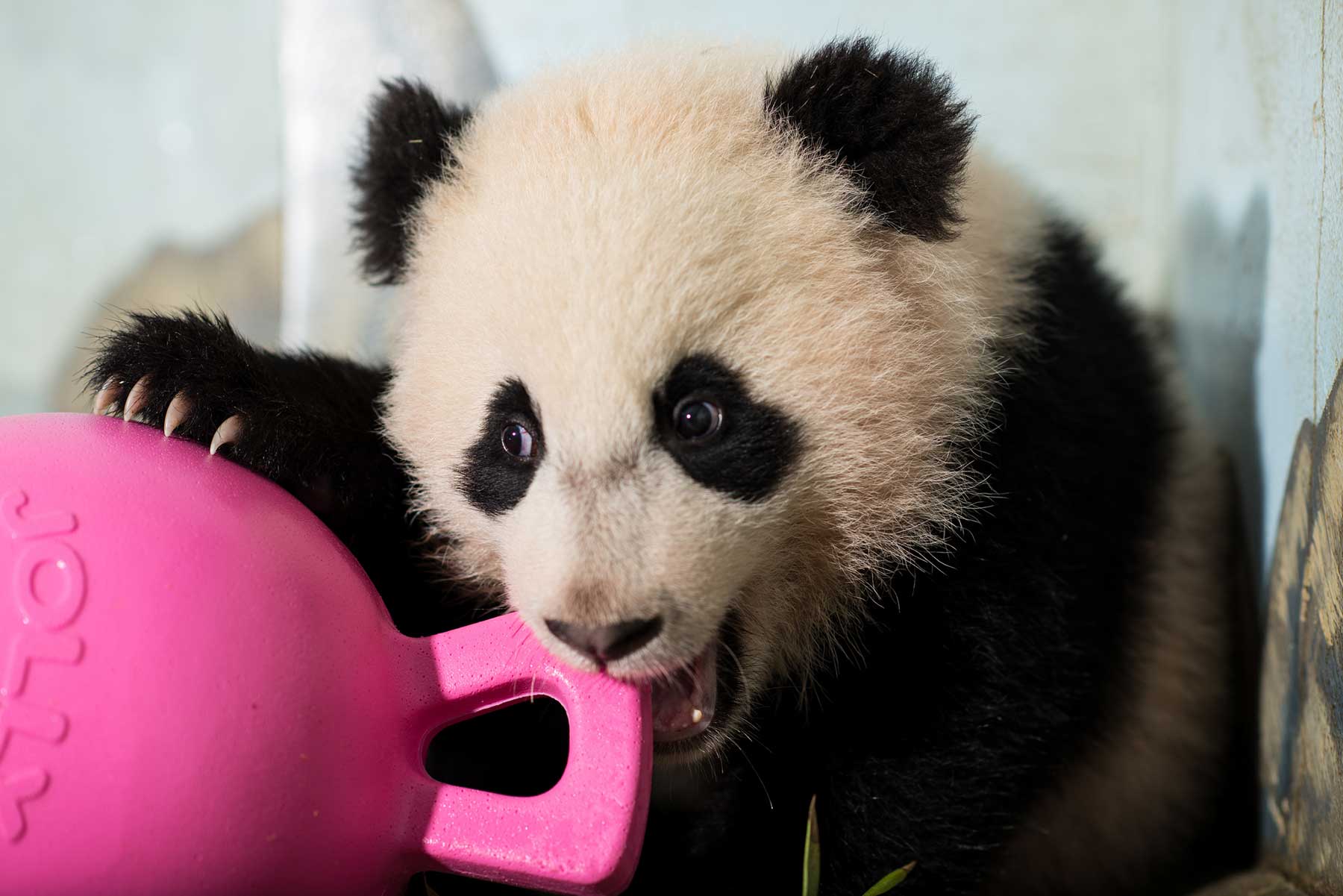
Bao Bao, a giant panda cub, chews on her latest toy, 2014. (National Zoo)
SO CUTE.
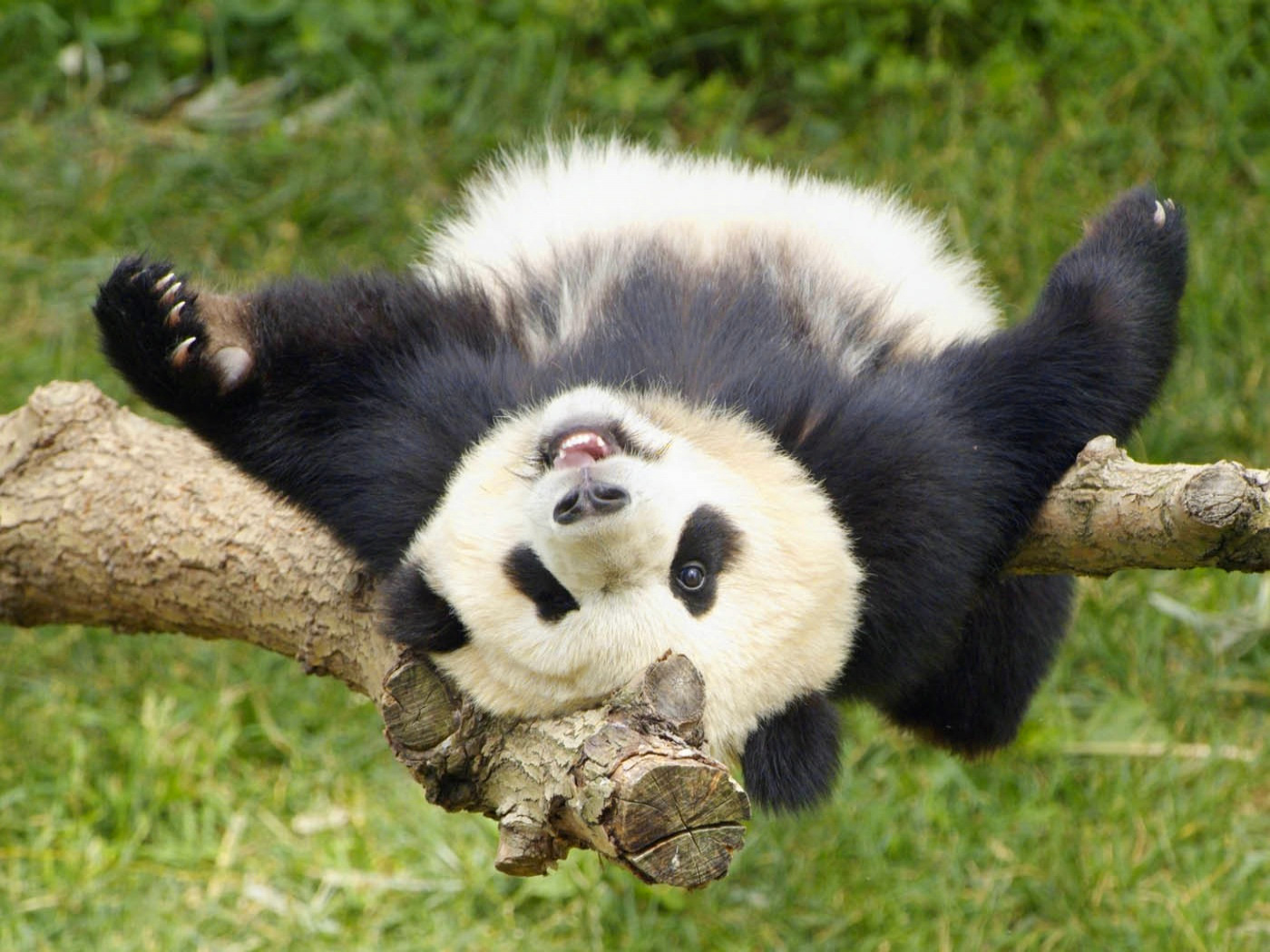
Tai Shan, the first surviving panda cub to be born at the National Zoo. Tai Shan currently resides in the Bifengxia Panda Base in Ya’an, Sichuan. (National Zoo)
So cute that each year, at least a few people go to the hospital after injuring themselves by trying to hug one. So cute that, despite being culturally symbolic of China, Americans have adopted pandas as their very own, flocking to zoos whenever a cub is born and greeting them with first ladies and tributing them with souvenirs. In 2014, the National Zoo’s panda cub Bao Bao was voted the most Smithsonian thing at the Smithsonian. He beat the Star-Spangled Banner, George Washington and a 67 million year old Tyrannosaurus Rex. Bao Bao was barely a year old.
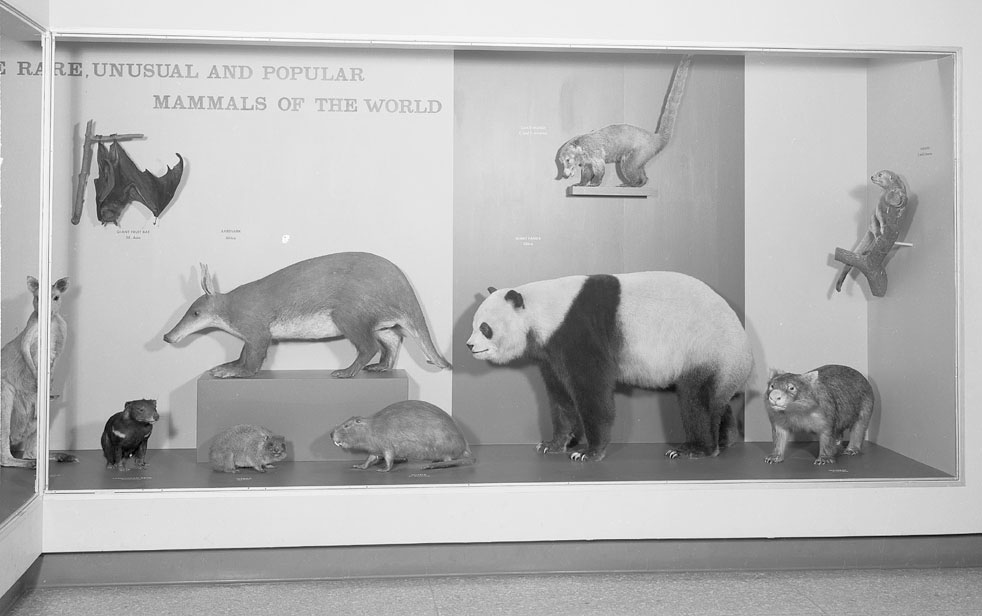
A giant panda on display among other animals in the Rare, Unusual and Popular Mammals of the World exhibit at the National Museum of Natural History, 1959. (Smithsonian Archives)
But it probably wasn’t strangeness, rarity or even adorableness that compelled Quentin and Ruth to set sail to Chengdu that autumn. It was for adventure. Until the point, the only Americans to ever see a living panda were Kermit and Theodore Roosevelt who, much in the spirit of their father the former president, hunted it. Ruth –a famous socialite – committed to fulfill the mission of her husband Bill, the explorer who died in China trying to capture a living panda to bring back to America. Imagine Kim Kardashian producing a classic record in honor of Kanye.
Ruth was bent on showing the world that she wasn’t just a pretty face for cocktail parties, a newly-wed widower and heiress of a rich man’s estate – but she still couldn’t resist doing it in style. She hired the 22-year-old Quentin Young, with his crisp suits and bilingual charm, to lead an expedition through China’s wild.

Quentin Young (left) and Ruth Harkness pose with Su-Lin, the first living giant panda cub to arrive in the United States. (BBC)
History has all but forgotten the tale of Ruth and Quentin. About their trek through the snow-frosted trees with a brigade of over a dozen men smoking pipes and carrying crates of clothes, powdered milk and a typewriter. About how Su-Lin the cub was discovered in a valley and tucked away in Quentin’s shirt. About the panda’s mother, who may or may not have been killed during the kidnapping (and how we might never know for sure because things like that weren’t quite important to anyone back then). About being stopped at customs while leaving China, and how Ruth managed to convince some aloof officer that the black-and-white national treasure she cradled in her arms was actually just a very unconventional dog. About the romance that formed between Ruth and Quentin, and how it ended with the voyage – not like it would’ve been legal in the country they were returning to.
When Ruth and Quentin arrived in New York, all that mattered to the press was that they had a panda – an odd specimen which, until then, was the stuff of drawings and imagination. Su-Lin made her premiere at Chicago’s Brookfield Zoo in 1937. The nation was smitten.
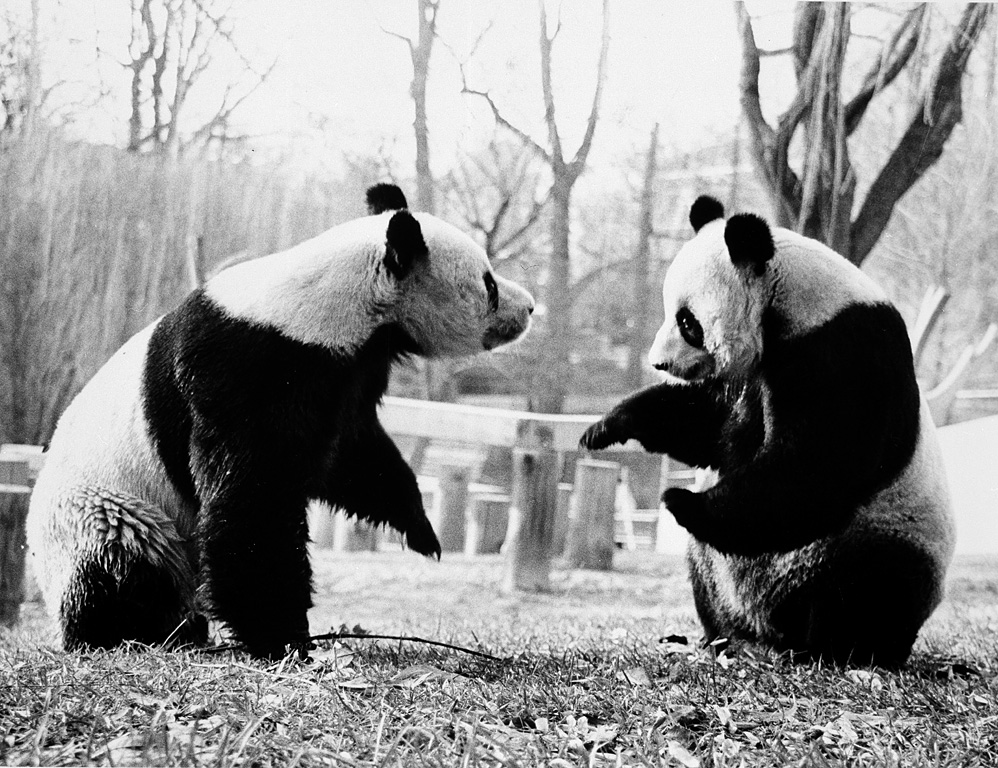
Ling-Ling and Hsing-Hsing at National Zoo, 1985. (Jessie Cohen/Smithsonian Archives)
Decades later, President Richard Nixon embarked on a trip to China to meet with Chairman Mao, with a mission to ensure that neither country would destroy the other with their arsenals of nuclear weapons. But even the idea of taming the Cold War didn’t inspire Americans to make pilgrimage to the nation’s capitol. People came to see the gift that China sent back with the president – two giant pandas at the National Zoo.
In 2013, America was dazzled yet again with the arrival of another panda to dote on. Bao Bao was born with the kind of greeting usually reserved for royal babies, with a live webcam and a media debut that featured not one, but two First Ladies. It was a celebration that Ruth and Quentin would have been proud of. To think that an international smuggling mission, nuclear diplomacy and the captive attention of a nation all lead to a creature prized quite simply because it’s so damned cute – maybe that tells us, more than anything else, about human nature.





